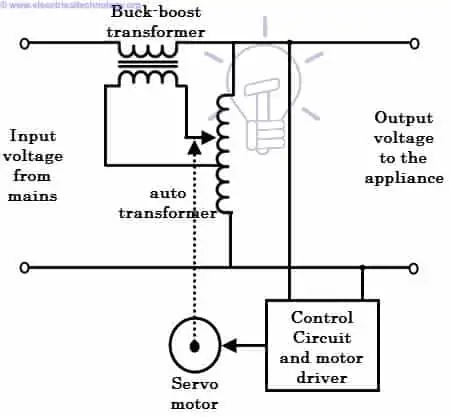An Automatic Voltage Regulator (AVR), also known as a voltage stabilizer, is a device designed to regulate and maintain a constant voltage level in electrical systems. It accomplishes this by continuously monitoring the output voltage and making rapid adjustments to the excitation current of generators or alternators, ensuring a stable output voltage regardless of fluctuations in input voltage or load conditions.

Functionality
The primary function of an AVR or voltage stabilizer is to stabilize the output voltage within a specified range, typically around a predetermined nominal voltage level. It achieves this by controlling the excitation current supplied to the field winding of the generator or alternator. By modulating the excitation level, the AVR compensates for changes in load demand or input voltage variations, thereby maintaining a consistent output voltage.
Components
AVRs aka voltage stabilizer consist of several essential components, including voltage sensors, control circuitry, and an actuator mechanism. The voltage sensors continuously monitor the output voltage and provide feedback to the control circuitry, which then determines the required excitation level based on preset parameters. The actuator mechanism adjusts the excitation current to the field winding accordingly, ensuring that the output voltage remains within the desired range.
Applications
AVRs or voltage stabilizer find widespread applications in various industries where stable voltage supply is critical. They are commonly used in standby generators to provide backup power to essential facilities such as hospitals, data centers, and telecommunications networks during utility outages. Additionally, AVRs are integral components of renewable energy systems, such as wind turbines and solar inverters, where they help maintain grid stability by regulating the voltage output.
Types of AVR
Several types of AVRs are available, each catering to specific voltage regulation requirements and system configurations. Some common types include:
- Brushless AVR: Utilizes solid-state electronics to control the excitation current, eliminating the need for brushes and slip rings, thereby reducing maintenance requirements.
- Synchronous AVR: Synchronized with the frequency of the generator or alternator to ensure precise voltage regulation, making it suitable for applications with stringent voltage stability requirements.
- Digital AVR: Incorporates digital control algorithms and microprocessor-based technology to achieve advanced voltage regulation capabilities and customizable performance parameters.
Benefits
The use of AVRs in electrical systems offers several benefits, including:
- Improved Equipment Performance: Maintaining a stable voltage supply helps prolong the lifespan of electrical equipment and reduces the risk of damage due to voltage fluctuations.
- Enhanced System Reliability: By preventing voltage surges or dips, AVRs contribute to increased system reliability and minimize the likelihood of costly downtime.
- Energy Efficiency: Consistent voltage levels optimize energy consumption and improve overall system efficiency, leading to potential cost savings over time.
In Conclusion
Automatic Voltage Regulators, or voltage stabilizers, play a crucial role in ensuring the stability and reliability of electrical systems across various industries. By continuously monitoring and adjusting voltage levels, AVRs help mitigate the effects of voltage fluctuations, safeguarding equipment and ensuring uninterrupted power supply. Their versatility and effectiveness make them indispensable components in modern electrical infrastructure.

